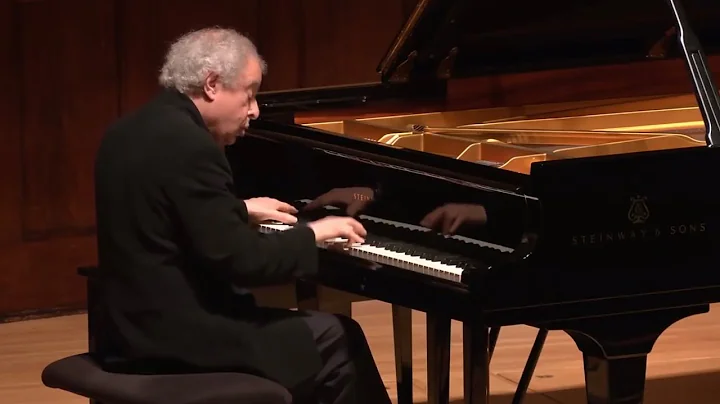David J Schummers
age ~44
from Colfax, CA
- Also known as:
-
- David James Schummers
- David J Williams
David Schummers Phones & Addresses
- Colfax, CA
- Redwood City, CA
- San Francisco, CA
- Sunnyvale, CA
- Los Altos, CA
- Palo Alto, CA
Work
-
Company:Home depotMay 2014
-
Position:Sales associate/customer service
Education
-
School / High School:Sierra College- Rocklin, CA2013
-
Specialities:Political Science, Behavioral Science
Resumes

Electrician At W B Electric Inc.
view sourceLocation:
San Francisco Bay Area
Industry:
Industrial Automation

David Schummers
view source
David Schummers Colfax, CA
view sourceWork:
Home Depot
May 2014 to 2000
Sales Associate/Customer Service Laramar S.F.
San Francisco, CA
Jan 2010 to Aug 2011
Resident Manager
May 2014 to 2000
Sales Associate/Customer Service Laramar S.F.
San Francisco, CA
Jan 2010 to Aug 2011
Resident Manager
Education:
Sierra College
Rocklin, CA
2013 to 2015
Political Science, Behavioral Science
Rocklin, CA
2013 to 2015
Political Science, Behavioral Science
Us Patents
-
Multi-Level Interspinous Implants And Methods Of Use
view source -
US Patent:20100312277, Dec 9, 2010
-
Filed:Jun 5, 2009
-
Appl. No.:12/479072
-
Inventors:Christopher U. Phan - San Leandro CA, US
David M. Schummers - San Francisco CA, US -
Assignee:KYPHON SARL - Neuchatel
-
International Classification:A61B 17/70
A61B 17/88 -
US Classification:606248, 606279
-
Abstract:Multi-level interspinous implants and methods of using the implants with the implants generally include a first member for placement in a first interspinous space and a second member for placement in a second interspinous space. An elongated connector extends from one of the members and is sized to fit in a slot in the other member. Each of the first and second members may include a distal wing, a body, and a proximal wing. The members may also be positioned in a closed orientation for insertion into the patient and a deployed orientation with the distal and proximal wings extending outward along lateral sides of respective spinous processes. The connector may extend outward from the proximal wing of one of the members and away from the other member when that member is in the closed orientation. The connector may be rotated and inserted into the slot where it is secured when that member from which is extends is moved to the deployed orientation.
-
Composite Spinal Facet Implant With Textured Surfaces
view source -
US Patent:20140025113, Jan 23, 2014
-
Filed:Sep 25, 2013
-
Appl. No.:14/037164
-
Inventors:Edward Liou - Los Altos CA, US
David Michael Schummers - San Francisco CA, US
Jeffrey D. Smith - Lafayette CA, US -
Assignee:Providence Medical Technology, Inc. - Lafayette CA
-
International Classification:A61B 17/70
-
US Classification:606247
-
Abstract:Implementations described and claimed herein provide a distal leading portion of a composite spinal implant for implantation in a spinal facet joint. In one implementation, the distal leading portion includes a distal leading end, a proximal trailing end, a first face, and a second face. The distal leading end has a distal surface generally opposite a proximal surface of the proximal trailing end. The first face has a first surface that is generally parallel with a second surface of the second face. The first and second faces extend between the distal leading end and the proximal trailing end, such that the first and second surfaces slope upwardly from the distal lead end to the proximal trailing end along a length of extending proximally. The first and second surfaces having one or more textured features adapted to provide friction with the spinal facet joint.
-
Endolumenal Object Sizing
view source -
US Patent:20220330808, Oct 20, 2022
-
Filed:May 2, 2022
-
Appl. No.:17/734268
-
Inventors:- Redwood City CA, US
David M. Schummers - Oakland CA, US
Prasanth Jeevan - San Mateo CA, US
Ritwik Ummalaneni - San Mateo CA, US -
International Classification:A61B 1/307
A61B 34/30
A61B 34/32
A61B 90/00
A61B 1/00
A61B 5/107
A61B 5/06
A61B 1/04
A61B 1/06 -
Abstract:An object sizing system sizes an object positioned within a patient. The object sizing system identifies a presence of the object. The object sizing system navigates an elongate body of an instrument to a position proximal to the object within the patient. An imaging sensor coupled to the elongate body captures one or more sequential images of the object. The instrument may be further moved around within the patient to capture additional images at different positions/orientations relative to the object. The object sizing system also acquires robot data and/or EM data associated with the positions and orientations of the elongate body. The object sizing system analyzes the captured images based on the acquired robot data to estimate a size of the object.
-
Process For Percutaneous Operations
view source -
US Patent:20200330167, Oct 22, 2020
-
Filed:May 4, 2020
-
Appl. No.:16/865904
-
Inventors:- Redwood City CA, US
David M. Schummers - Oakland CA, US
David S. Mintz - Los Altos Hills CA, US -
International Classification:A61B 34/30
A61B 1/307
A61B 18/26
A61B 17/221
A61B 17/32
A61B 17/3207
A61B 34/00
A61B 90/50
A61B 1/00
A61B 1/005
A61B 1/015
A61B 1/018
A61B 1/05
A61B 1/06
A61B 17/3203
A61B 34/20
A61B 17/00 -
Abstract:A method is described for performing a percutaneous operation on a patient to remove an object from a cavity within the patient. The method includes advancing a first alignment sensor into the cavity through a patient lumen. The first alignment sensor provides its position and orientation in free space in real time. The alignment sensor is manipulated until it is located in proximity to the object. A percutaneous opening is made in the patient with a surgical tool, where the surgical tool includes a second alignment sensor that provides the position and orientation of the surgical tool in free space in real time. The surgical tool is directed towards the object using data provided by both the first and the second alignment sensors.
-
Systems And Methods For Concomitant Medical Procedures
view source -
US Patent:20200085516, Mar 19, 2020
-
Filed:Sep 3, 2019
-
Appl. No.:16/559310
-
Inventors:- Redwood City CA, US
Alexander Tarek Hassan - San Francisco CA, US
Frederic H. Moll - San Francisco CA, US
David Stephen Mintz - Mountain View CA, US
David M. Schummers - Oakland CA, US
Paxton H. Maeder-York - Cambridge MA, US
Andrew F. O'Rourke - Los Angeles CA, US -
International Classification:A61B 34/30
A61B 34/00
A61B 34/37
A61B 50/13
A61B 1/267
A61B 1/273
A61B 10/04
A61B 1/307
A61B 34/20
A61B 1/00
A61G 13/10
B25J 9/00
B25J 15/00
B25J 13/06 -
Abstract:Systems and methods for performing concomitant medical procedures are disclosed. In one aspect, the method involves controlling a first robotic arm to insert a first medical instrument through a first opening of a patient and controlling a second robotic arm to insert a second medical instrument through a second opening of the patient. The first robotic arm and the second robotic arm are part of a first platform and the first opening and the second opening are positioned at two different anatomical regions of the patient.
-
Spinal Facet Cage Implant
view source -
US Patent:20190240041, Aug 8, 2019
-
Filed:Dec 21, 2018
-
Appl. No.:16/231259
-
Inventors:- Pleasanton CA, US
Edward Liou - Pleasanton CA, US
David Michael Schummers - Oakland CA, US
Jeffrey D. Smith - Clayton CA, US -
International Classification:A61F 2/44
A61B 17/17
A61B 17/16
A61B 17/70
A61B 17/88
A61B 17/02 -
Abstract:Implementations described and claimed herein provide a spinal facet cage implant for implantation in a spinal facet joint. In one implementation, the implant includes a distal leading end, a proximal trailing end, a first face, and a second face. The distal leading end has a distal surface generally opposite a proximal surface of the proximal trailing end. The first face has a first surface that is generally parallel with a second surface of the second face. The first and second faces extend between the distal leading end and the proximal trailing end. The first and second surfaces having one or more textured features adapted to provide friction with the spinal facet joint. One or more windows are defined in the first and/or second surfaces, and one or more side windows are defined in the first and/or second side surfaces.
-
Endolumenal Object Sizing
view source -
US Patent:20190175009, Jun 13, 2019
-
Filed:Nov 2, 2018
-
Appl. No.:16/179568
-
Inventors:- Redwood City CA, US
David M. Schummers - Oakland CA, US
Prasanth Jeevan - San Mateo CA, US
Ritwik Ummalaneni - San Mateo CA, US -
International Classification:A61B 1/307
A61B 1/06
A61B 1/04
A61B 34/30
A61B 34/32
A61B 90/00 -
Abstract:An object sizing system sizes an object positioned within a patient. The object sizing system identifies a presence of the object. The object sizing system navigates an elongate body of an instrument to a position proximal to the object within the patient. An imaging sensor coupled to the elongate body captures one or more sequential images of the object. The instrument may be further moved around within the patient to capture additional images at different positions/orientations relative to the object. The object sizing system also acquires robot data and/or EM data associated with the positions and orientations of the elongate body. The object sizing system analyzes the captured images based on the acquired robot data to estimate a size of the object.
-
Endolumenal Object Sizing
view source -
US Patent:20180177561, Jun 28, 2018
-
Filed:Dec 28, 2016
-
Appl. No.:15/392674
-
Inventors:- San Carlos CA, US
David M. Schummers - San Carlos CA, US
Prasanth Jeevan - San Mateo CA, US
Ritwik Ummalaneni - San Mateo CA, US -
International Classification:A61B 90/00
A61B 34/30
A61B 1/04
A61B 1/06
A61B 1/307 -
Abstract:An object sizing system sizes an object positioned within a patient. The object sizing system identifies a presence of the object. The object sizing system navigates an elongate body of an instrument to a position proximal to the object within the patient. An imaging sensor coupled to the elongate body captures one or more sequential images of the object. The instrument may be further moved around within the patient to capture additional images at different positions/orientations relative to the object. The object sizing system also acquires robot data and/or EM data associated with the positions and orientations of the elongate body. The object sizing system analyzes the captured images based on the acquired robot data to estimate a size of the object.
Name / Title
Company / Classification
Phones & Addresses
Vice-President
Endogastric Solutions Inc
General Hospital · General Medical and Surgical Hospitals, Nsk · Business Services · Medical Doctor's Office
General Hospital · General Medical and Surgical Hospitals, Nsk · Business Services · Medical Doctor's Office
1900 Ofarrell St, San Mateo, CA 94403
555 Twin Dolphin Dr, Redwood City, CA 94065
555 Twin Dolphin Dr, Redwood City, CA 94065
Get Report for David J Schummers from Colfax, CA, age ~44





